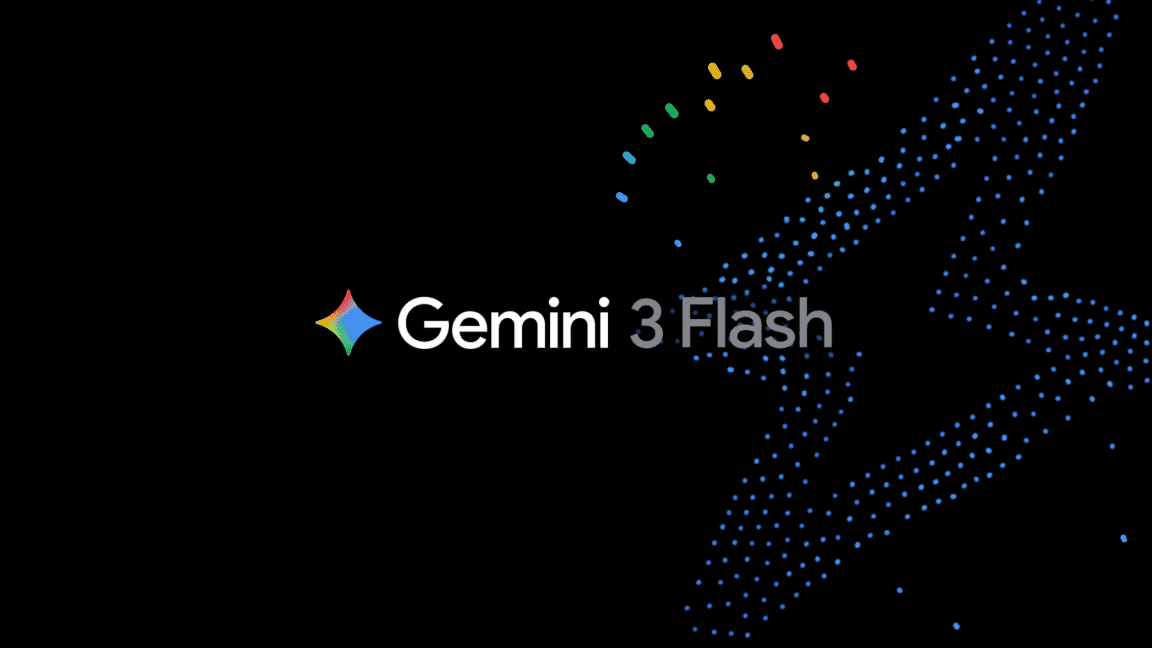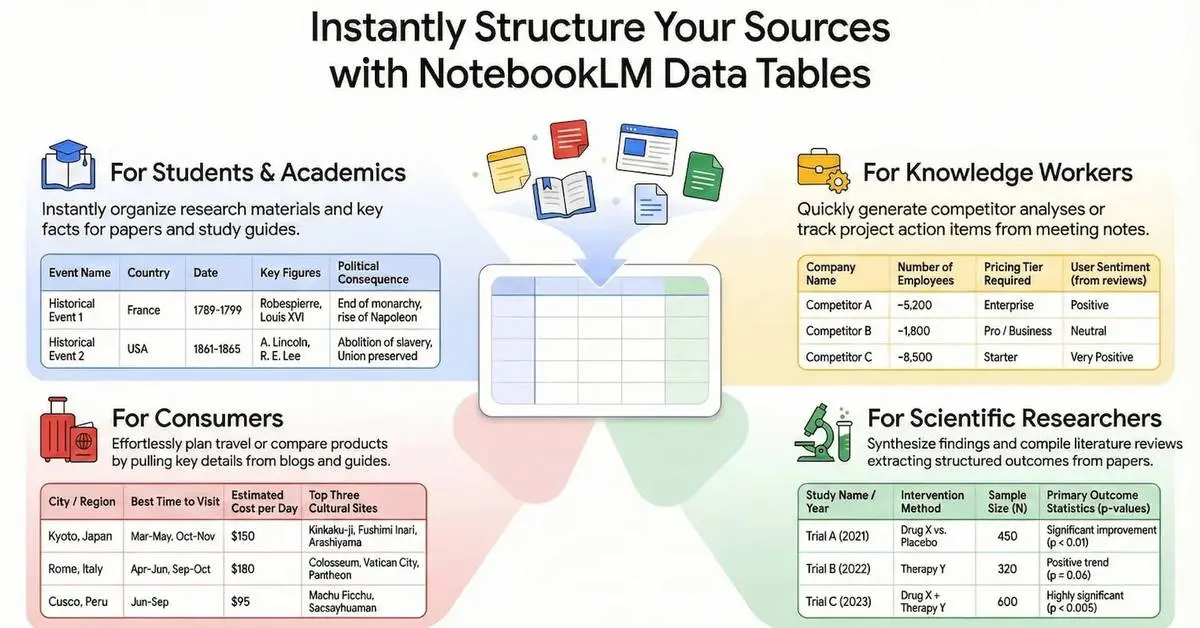Vector Databases: The Unsung Heroes of AI's Data Revolution
3 Sources
3 Sources
[1]
Vector Databases are Ridiculously Good
With the increasing adoption predicted by experts and the introduction of educational resources, vector databases are set to play a pivotal role in shaping the next era of AI technology Building large language models requires complicated data structures and computations, which conventional databases are not designed to handle. Consequently, the importance of vector databases has surged since the onset of the generative AI race. This sentiment was reflected in a recent discussion when software and machine learning engineer Santiago Valdarrama said, "You can't work in AI today without bumping with a vector database. They are everywhere!" He further added that vector databases, with their ability to store floating-point arrays and be searched using a similarity function, offer a practical and efficient solution for AI applications. Vector databases provide LLMs with access to real-time proprietary data, enabling the development of RAG applications. Database companies are pivotal in driving the generative AI revolution and its growth. Redis enhances real-time efficiency for LLM-powered chatbots like ChatGPT, ensuring smooth conversations. At the smae time, enterprises are leveraging MongoDB Atlas and Google Cloud Vertex AI PaLM API to develop advanced chatbots. However, major database vendors, regardless if they were originally established as SQL or NoSQL, such as MongoDB, Redis, PlanetScale, and even Oracle have all added vector search features to their existing solutions to capitalise on this growing need. In an earlier interaction with AIM, Yiftach Shoolman, the co-founder and CTO of Redis, said, "We have been working with vector databases even before generative AI came into action." Redis not only fuels the generative AI wave with real-time data but has also partnered with LangChain to launch OpenGPT, an open-source model that allows flexible model selection, data retrieval control, and data storage management. Another important challenge vector databases claim to solve is hallucinations, which have been a persistent issue for LLMs. "Pairing vector databases with LLMs allows for the incorporation of proprietary data, effectively reducing the potential range of responses generated by the database," said Matt Asay, VP, developer relations, in an exclusive interaction with AIM at last year's Bengaluru chapter of their flagship event MongoDB.local. During a recent panel discussion, Pinecone founder and CEO Edo Liberty explained that vector databases are made to manage these particular types of information "in the same way that in your brain, the way you remember faces or the way you remember poetry". Most of the prominent names in the industry have already implemented vector capabilities. Think Amazon Web Services, Microsoft, IBM, Databricks, MongoDB, Salesforce, and Adobe. Jonathan Ellis, the co-founder and CTO of DataStax, explained that while OpenAI's GPT-4 is limited to information up until September 2021, indexing recent data in a vector database and directing GPT-4 to access it can yield more accurate and high-quality answers. This approach eliminates the need for the model to fabricate information, as it is grounded in updated context. However, vector databases are not without challenges. A recent report by Gartner noted that using vector databases for generative AI may raise issues with raw data leakage from embedded vectors. Raw data used to create vector embeddings for GenAI can be re-engineered from vector databases, making data leakage possible. "Given the compute costs associated with AI, it is crucial for organisations to engage in worker training around vector database capabilities," Gartner analyst Arun Chandrasekaran emphasised in an interview with Fierce. "This preparation will help them avoid expensive misuse and misalignment in their AI projects." Nevertheless, several vector db startups are now gaining prominence. During an otherwise weak year for venture capital, hundreds of dollars are flowing into vector database businesses like Pinecone, which got $100 million in April 2023 from Andreessen Horowitz. Pinecone is not the only one. Dutch firm Weaviate secured $50 million from Index Ventures. The Weaviate AI-native vector database simplifies vector data management for AI developers. There are emerging divisions in the vector database arena, particularly between open- and closed-source players, and between dedicated vector databases and those with integrated vector storage and search functionality. On the dedicated, open-source side, Chroma, Quadrant, and Milvus (in collaboration with IBM) stand out, while Pinecone is a leading dedicated, closed-source player. Meanwhile, Snowflake, although not a dedicated vector database, offers vector search capabilities within its open-source framework. And there's a good reason why so many people are jumping into this sector. Chandrasekaran predicts that 30% of organisations will employ vector databases to support their generative AI models by 2026, up from 2% in 2023. Understanding its importance, Andrew Ng, has also introduced free learning courses on the same with MongoDB, Weavaiate, Neo4j and more. With the increasing adoption predicted by experts and the introduction of educational resources, vector databases are set to play a pivotal role in shaping the next era of AI technology. As organisations continue to integrate these powerful tools, the potential for innovation and improved AI capabilities becomes ever more significant, heralding a new age of intelligent applications and solutions.
[2]
Unlocking the Potential of AI with Vector Databases
Did you know that over 80% of the data generated today is unstructured? Traditional databases often fall short in managing this type of data efficiently. That's where vector databases come into play. They encode information as vectors in a multi-dimensional space, making it easier to handle and query unstructured data. Vector databases are transforming the field of artificial intelligence by providing a powerful and efficient way to manage and process unstructured data. Unlike traditional databases that are designed to handle structured, tabular data, these databases excel at encoding and organizing complex information in a multi-dimensional space. This unique approach enables rapid and accurate querying, making vector databases an indispensable tool for modern AI applications. At the core of vector databases lies the concept of vectors. Vectors are mathematical entities that possess both direction and magnitude, allowing them to represent data points in a high-dimensional space. This representation is particularly well-suited for encoding intricate and diverse types of data, such as images, audio files, and textual documents. By transforming unstructured data into vector representations, these databases unlock the potential to efficiently store, retrieve, and analyze vast amounts of complex information. The power of vector databases lies in their ability to store and manage data as vectors. When unstructured data, such as an image or a piece of text, is fed into a vector database, it undergoes a transformation process that converts it into a high-dimensional vector representation. This transformation captures the essential features and characteristics of the data, allowing efficient similarity searches and data retrieval. Traditional databases, which rely on structured data formats like tables and rows, often struggle to handle the complexities and variability of unstructured data. In contrast, vector based databases embrace the inherent nature of unstructured data and provide a seamless way to store and query it. By leveraging the mathematical properties of vectors, these databases can quickly identify similar data points and retrieve relevant information based on their proximity in the vector space. Unstructured data, such as images, audio files, and PDF documents, holds a wealth of valuable information that can drive innovation and insights in various domains. However, managing and extracting meaningful insights from this data has been a persistent challenge for organizations. Vector databases provide a powerful solution to this problem by transforming unstructured data into a format that can be efficiently queried and analyzed. By encoding unstructured data as vectors, vector databases enable AI applications to unlock the hidden patterns, relationships, and similarities within the data. This capability is particularly crucial for applications that rely on large volumes of unstructured data, such as image recognition systems, natural language processing models, and recommendation engines. With vector databases, these applications can quickly search through massive datasets, identify relevant information, and deliver accurate results in real-time. Here are a selection of other articles from our extensive library of content you may find of interest on the subject of vector databases : The versatility and efficiency of vector databases make them applicable to a wide range of AI applications. Some notable use cases include: To harness the power of vector databases in your own AI projects, Chroma DB provides a user-friendly and efficient solution. Here's a step-by-step guide to get you started: 1. Setting Up the Development Environment: - Begin by setting up your preferred development environment, such as Visual Studio Code (VS Code) or any other IDE of your choice. - Ensure that you have Python installed on your system, as Chroma DB is built on top of Python. - Consider integrating the OpenAI API to leverage advanced functionalities and pre-trained models for enhanced performance. 2. Installing Chroma DB: - Follow the official installation instructions provided by Chroma DB to set up the database on your system. - Typically, this involves using a package manager like pip to install the necessary dependencies and libraries. 3. Creating a Collection and Adding Documents: - Once Chroma DB is installed, you can start organizing your data into collections. - A collection is a logical grouping of documents that share similar characteristics or belong to the same domain. - To add documents to a collection, you need to convert them into vector representations using techniques like word embeddings or feature extraction. 4. Querying the Database and Interpreting Results: - With your data stored as vectors in Chroma DB, you can now perform queries to retrieve relevant information. - Chroma DB provides intuitive APIs and query languages that allow you to search for similar documents based on their vector similarities. - Analyze the retrieved results to gain insights, identify patterns, and make informed decisions based on the data. Vector databases offer several compelling advantages over traditional databases when it comes to handling unstructured data and powering AI applications: Vector databases are transforming the landscape of data management and AI development. By providing a powerful and efficient way to handle unstructured data, unlocking new possibilities for building intelligent applications. As the volume and complexity of data continue to grow, vector databases will play an increasingly crucial role in driving innovation and allowing organizations to extract valuable insights from their data. By exploring and practicing with vector databases like Chroma DB, developers and data scientists can stay at the forefront of AI advancements. Whether you're working on image recognition, natural language processing, recommendation systems, or any other AI application, vector databases provide the foundation for efficient data management and analysis. Embrace the power of vector databases and unlock the full potential of your AI projects. Start experimenting with Chroma DB today and experience the transformative impact of vector databases firsthand. With the right tools and techniques, you can harness the vast potential of unstructured data and build innovative AI applications that drive innovation and deliver exceptional results. Here are a few major providers of vector database storage:
[3]
Vector Databases are Ridiculously Good
With the increasing adoption predicted by experts and the introduction of educational resources, vector databases are set to play a pivotal role in shaping the next era of AI technology Building large language models requires complicated data structures and computations, which conventional databases are not designed to handle. Consequently, the importance of vector databases has surged since the onset of the generative AI race. This sentiment was reflected in a recent discussion when software and machine learning engineer Santiago Valdarrama said, "You can't work in AI today without bumping with a vector database. They are everywhere!" He further added that vector databases, with their ability to store floating-point arrays and be searched using a similarity function, offer a practical and efficient solution for AI applications. Vector databases provide LLMs with access to real-time proprietary data, enabling the development of RAG applications. Database companies are pivotal in driving the generative AI revolution and its growth. Redis enhances real-time efficiency for LLM-powered chatbots like ChatGPT, ensuring smooth conversations. At the smae time, enterprises are leveraging MongoDB Atlas and Google Cloud Vertex AI PaLM API to develop advanced chatbots. However, major database vendors, regardless if they were originally established as SQL or NoSQL, such as MongoDB, Redis, PlanetScale, and even Oracle have all added vector search features to their existing solutions to capitalise on this growing need. In an earlier interaction with AIM, Yiftach Shoolman, the co-founder and CTO of Redis, said, "We have been working with vector databases even before generative AI came into action." Redis not only fuels the generative AI wave with real-time data but has also partnered with LangChain to launch OpenGPT, an open-source model that allows flexible model selection, data retrieval control, and data storage management. Another important challenge vector databases claim to solve is hallucinations, which have been a persistent issue for LLMs. "Pairing vector databases with LLMs allows for the incorporation of proprietary data, effectively reducing the potential range of responses generated by the database," said Matt Asay, VP, developer relations, in an exclusive interaction with AIM at last year's Bengaluru chapter of their flagship event MongoDB.local. During a recent panel discussion, Pinecone founder and CEO Edo Liberty explained that vector databases are made to manage these particular types of information "in the same way that in your brain, the way you remember faces or the way you remember poetry". Most of the prominent names in the industry have already implemented vector capabilities. Think Amazon Web Services, Microsoft, IBM, Databricks, MongoDB, Salesforce, and Adobe. Jonathan Ellis, the co-founder and CTO of DataStax, explained that while OpenAI's GPT-4 is limited to information up until September 2021, indexing recent data in a vector database and directing GPT-4 to access it can yield more accurate and high-quality answers. This approach eliminates the need for the model to fabricate information, as it is grounded in updated context. However, vector databases are not without challenges. A recent report by Gartner noted that using vector databases for generative AI may raise issues with raw data leakage from embedded vectors. Raw data used to create vector embeddings for GenAI can be re-engineered from vector databases, making data leakage possible. "Given the compute costs associated with AI, it is crucial for organisations to engage in worker training around vector database capabilities," Gartner analyst Arun Chandrasekaran emphasised in an interview with Fierce. "This preparation will help them avoid expensive misuse and misalignment in their AI projects." Nevertheless, several vector db startups are now gaining prominence. During an otherwise weak year for venture capital, hundreds of dollars are flowing into vector database businesses like Pinecone, which got $100 million in April 2023 from Andreessen Horowitz. Pinecone is not the only one. Dutch firm Weaviate secured $50 million from Index Ventures. The Weaviate AI-native vector database simplifies vector data management for AI developers. There are emerging divisions in the vector database arena, particularly between open- and closed-source players, and between dedicated vector databases and those with integrated vector storage and search functionality. On the dedicated, open-source side, Chroma, Quadrant, and Milvus (in collaboration with IBM) stand out, while Pinecone is a leading dedicated, closed-source player. Meanwhile, Snowflake, although not a dedicated vector database, offers vector search capabilities within its open-source framework. And there's a good reason why so many people are jumping into this sector. Chandrasekaran predicts that 30% of organisations will employ vector databases to support their generative AI models by 2026, up from 2% in 2023. Understanding its importance, Andrew Ng, has also introduced free learning courses on the same with MongoDB, Weavaiate, Neo4j and more. With the increasing adoption predicted by experts and the introduction of educational resources, vector databases are set to play a pivotal role in shaping the next era of AI technology. As organisations continue to integrate these powerful tools, the potential for innovation and improved AI capabilities becomes ever more significant, heralding a new age of intelligent applications and solutions.
Share
Share
Copy Link
Vector databases are emerging as crucial tools in AI development, offering efficient storage and retrieval of high-dimensional data. Their impact spans various industries, from e-commerce to healthcare, revolutionizing how we handle complex information.

The Rise of Vector Databases in AI
In the rapidly evolving landscape of artificial intelligence, vector databases have emerged as a game-changing technology, offering unprecedented efficiency in handling high-dimensional data. These specialized databases are designed to store and query vector embeddings, which are numerical representations of complex data such as images, text, or audio
1
.Understanding Vector Databases
Vector databases differ from traditional relational databases by focusing on similarity search rather than exact matching. This approach allows for more nuanced and context-aware data retrieval, making them ideal for AI applications. They excel in storing and querying large volumes of unstructured data, which is crucial for machine learning models and AI systems
2
.Applications Across Industries
The versatility of vector databases has led to their adoption across various sectors:
- E-commerce: Powering recommendation engines and visual search features.
- Healthcare: Enabling similarity search in medical imaging and genomic data analysis.
- Finance: Enhancing fraud detection and risk assessment models.
- Content Platforms: Improving content recommendation and discovery
1
.
Performance and Scalability
Vector databases offer significant performance improvements over traditional databases when dealing with high-dimensional data. They can handle billions of vectors while maintaining low latency, making them suitable for real-time applications. This scalability is crucial for businesses dealing with ever-growing datasets
3
.Integration with AI Models
One of the key strengths of vector databases is their seamless integration with AI models. They can efficiently store and retrieve the output of large language models and other AI systems, facilitating more sophisticated analysis and decision-making processes. This integration is particularly valuable in natural language processing and computer vision applications
2
.Related Stories
Challenges and Future Developments
Despite their advantages, vector databases face challenges such as the need for standardization and improved interoperability with existing systems. As the technology matures, we can expect to see more robust solutions addressing these issues, potentially leading to wider adoption across industries
3
.Impact on AI Development
The rise of vector databases is significantly impacting AI development workflows. They enable more efficient training of AI models by providing quick access to relevant data. This efficiency is crucial in iterative development processes, where rapid prototyping and testing are essential
1
.References
Summarized by
Navi
[2]
Related Stories
Vector Databases and Search: Revolutionizing Information Retrieval in the AI Era
16 Oct 2024•Technology

Zilliz Unveils Major Upgrade to Cloud-Based Vector Database, Targeting Enterprise AI Efficiency
20 Nov 2024•Technology

AWS launches S3 Vectors with 90% cost savings claim, scales to 2 billion vectors per index
03 Dec 2025•Technology

Recent Highlights
1
Google launches Gemini 3 Flash as default AI model, delivering speed with Pro-grade reasoning
Technology

2
OpenAI launches GPT Image 1.5 as AI image generator war with Google intensifies
Technology

3
OpenAI launches ChatGPT app store, opening doors for third-party developers to build AI-powered apps
Technology





